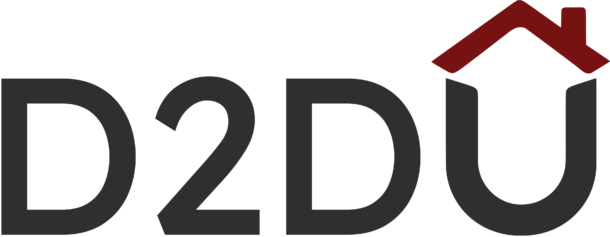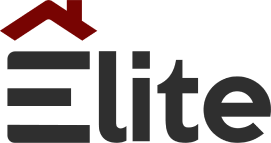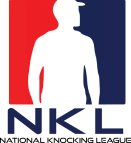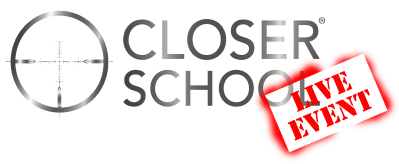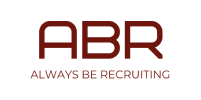Ad 00:06
can’t knock this is brought to you by the Sarris universe, he s is now a serious Pest Control distributor making a positive impact on young businesses. Along with the broad product portfolio of top brands. We offer exclusives like the intercare mosquito trap, and with the resources like pro training, inventory manager and pest web, and over 65 locations nationwide, we provide the products and insights to grow your business visit go dot vis sarris.com slash knock this to learn more. Hey, everybody, this
Sam Taggart 00:39
Hi, this is Sam Taggart with the D2D podcast. And, you know, I’ve been working on this book, the achievement Blueprint. We’re changing the name a little bit, but it’s a work in progress. So today, I’m actually gonna go into achievement, you got to have a good team. And, you know, I think a lot of times we get stuck in the solopreneur or we get stuck in like, Hey, I’ll just be a sales dude and just keep selling and selling and we don’t realize the power leverage and so today I’m gonna be diving into that. Before I go into that I’ve got a few awesome announcements and we’ve solidified our final keynote speakers for DDD con. So listen carefully. David Goggins author of can’t hurt me. He has the world record of pull ups, he’s run 200 mile races in the desert is one of the only ones to finish the navy seals, the buds training, Ranger training, you know, the guy who was the seal that Jesse Itzler lived with that, you know, he just has a phenomenal story in anybody that follows David Goggins. I mean, it’s worth the ticket alone, like, flat out worth the ticket alone. And then you have john Maxwell, then we also solidified Brad Lee. He’s one of the ways we guys spoke at TEDx con. It’s a lot of stuff with grant, Cardone and others. Then you have Hal Elrod, and he’s the author of Miracle Morning. And then you have Tim story, who’s a big philanthropist preacher like he’s spoke all over the world. He also spoke at TEDx gone. I mean, the lineup that we have, is probably better than any other lineup. I’ve I’ve ever seen any, any speech, like any event, and, you know, it really is. I mean, every year on my comedy, I talk the lineup like I can’t think of any cooler people to bring. So this year, January 8, and ninth Salt Lake City, Utah. And don’t be alarmed when all sudden you see the price of a DDD con ticket a lot higher than it usually is. It’s simply because we are taking this to another level, we are weeding out the people that don’t care to invest. I believe that if you really want to transform your life, you got to spend money to make money, I believe it’s not until you are the one that actually goes in and says I have to fork up money for change. And it’s not even for me as much as it is for you. I found in the last few years, we’ve had a lot of people come to the con we’ve had a lot of people have amazing success after the event. But I think a lot of people come because they’re managers or the hype or whatever. And they don’t come for the right reason. I want you to come feel the pain of not performing after if you put substantial money into this. So for us, I was like I’ve I’ve coached and consulted and changed a lot of people’s lives over the last few years. And I found that money them putting in their own investment, I believe is step one of transformation. So get your ticket today, we only have 500 seats. I also believe in the intimacy of this event, being able to interact a little bit more with the speakers being able to have a little bit longer workshops, we have 18 workshops. So anyway, go grab your ticket DDD con calm. So today, we’re going to, we’re going to dive into the achievement blueprint again. And you know, last week, we did the workaholic and had a lot of good feedback. So if you haven’t listened that one go check it out. But the chairman blueprint is very dependent on your ability to follow these laws. And I’m going to talk about the the over encompassing law of wealth, which is value times leverage, and it comes from this book, or more test called the wealth dynamics test. And I highly recommend going taking that by Roger Hamilton. And I make all my team take it and you’ll figure out your genius and but before diving into this wealth formula, you got to understand some other formulas which is speed equals distance times are divided by time, and how far do you want to go and sales business like what are your goals? And really, what’s the destination? I think a lot of people that don’t understand like, Okay, this year my destination is x well it’s like okay, that’s the distance Well, how long did it take you to get there? No, there’s a kid that just did a million dollars in Pest Control sales in 113 days and things like 1400. And something accounts over 600 some contract value. And the distance he went in the same 113 days was way more, I mean, 10 times more than a lot of people would ever do. And he just had a lot of speed, he just did it fast. I mean, everybody could go do 14 hour accounts, it just might take them, you know, five years to do it. So, you know, time is, you know, obviously how long it takes you. And then the next formula is acceleration equals change in velocity divided by time interval. And so it’s like, Okay, how does how does one accelerate their success? Like, how long does it take you to go from one speed to another speed, in, in your, in your success and to achieve? I look at like acceleration as a vital element, because you’re sitting there and you’re like, Okay, I’m doing one a week, or I’m doing one a day? How do I go to two? How do we get to three? How do we accelerate that? And so it’s this change in velocity. And once you’ve kind of reached the acceleration, you’ve got the speed, how do you keep up momentum and keep compounding on that? That’s mass times velocity, or mass times speed? and mass is, in my opinion, it’s like the weight, it’s the the size of the object, it’s the the wind, you know, aerodynamic ness. It’s the, you know, and I think of that, like, Okay, how does that apply to sales, how does that apply to business and its mass is all about the drag and the friction, something has, you know, if you have a Formula One car, it’s different than a semi driving down the truck, right. And in aviation, they use the term thrust a lot, the definition of thrust is to overcome drag. And so you ask yourself, what’s putting you into propulsion, and when you don’t operate from your, and in my opinion, when you operate from your own genius, and understand your dynamic, and how to really leverage your own talents, where we eliminate drag, and when we’re literally out of alignment. And we’re not leveraging tools, people systems to their full capacity, it’s going to slow us down, it’s going to it’s gonna change our acceleration and speed and you know, our, eventually our momentum, it’s gonna lose it, it’s gonna hit gravity and just get pulled down. So basically, this leads us to the, you know, the wealth formula. And wealth is the value times leverage and leverage, in my opinion, and is when Archimedes says it, you know, you give me a lever long enough and a fulcrum in which to put it, I can move the world. And so the problem was sales people. So if you’re a sales, dude, maybe your top performers, this guy, this did a million dollars in pest control, they often fail to leverage their systems, other people to help them sell more deals, they fill the whole sales process should fall on their shoulders, they react, they reach like this maximum velocity, you know, you ask yourself, okay, maybe somebody could do 1,000,005, next year, I don’t know, this is a new record, they perform as high as a rep could in 24 hours. And you can only talk to so many people, like you could sort your cell cycle, you could, you know, run faster and in between houses, or prospects or whatever. But, you know, you only felt you only really reached new heights. And I believe, you know, to go from a million dollar producer and pest control to a $2 million producer, you got to start leveraging systems. And maybe it’s you have a dude shadowing you that says, hey, you go prospect, a couple and just kind of weed out some of the negative or go find people that are home, and then let me know which ones are home. So I can go directly to those homes, you know, whatever that is. And once you reach this maximum velocity, it’s like, enough time to maybe be a manager, it’s like maybe you got to start getting more better marketing. I mean, there’s so many things that you could do to break this massive maximum velocity. And I think too many people get fixated on sell more deals, and it might just be grow your team or business XYZ. So business owners get caught in this by spending their time doing $15 an hour tasks and getting caught in the little things. Even though their time’s worth way more than that. They make business cards and they’re designing Facebook’s and posts and their video edits and running commission reports and they’re doing bookkeeping and all of which the team could free you up and spend more time doing things that drive the business. And so I watch, you know, the first thing I look for when I go to business consult somebody is I’m like okay, map out everything you do in a week and I found that 20/30 hours a week. The CEOs end up just doing stupid stuff that gives them no energy. It, you know, that has to get done, it’s important, but it’s kind of like, couldn’t you have somebody that’s getting 15 bucks an hour, go do it. And, you know, I use things like upwork.com Fiverr, to, to outsource some of the micro jobs. I mean, some of you guys don’t even realize it, but like this podcast and is sent over to some dude overseas, he’s gonna clip it up, he’s gonna post it, he’s gonna, you know, write the copy for it, there’s gonna be another guy that sends it to design. And you know what I mean? Like, there’s a whole team behind the scenes that cost me, you know, under 10 bucks an hour to really produce some of this stuff at a fast and high quantity. production. So, you know, no one lives long enough to learn everything they need to learn starting from scratch. To be successful, we absolutely, positively have to find people who have already paid the price to learn the things that we need to learn to achieve our goals. It’s Brian Tracy. And so time by picking the right team and in the book by Jim Collins, Good to Great says leaders of great companies first ask who then what, and, you know, we’ve all heard get the right people in the right seats in the bus. And so if you’re the bus driver, and you’re at a standstill, it’s because the job, you know, like you don’t have even like a good bus driver. And you got to decide where you’re going. A lot of times, it’s like, okay, we’re getting a bus, we’re all sitting there. And it’s like, okay, where do you want to go? It’s like, well, I don’t know. So you just sit there, you know, or you move way slower? Because you’re like, well, I don’t want to get anywhere too far. Because if we start going this direction, then what if we pave it, and then I got to go backtrack and wasted a bunch of gas. Like, I won’t do that. So, you know, most people assume that they’re really good at being the CEO and the leader. But you know, that that that’s where articulating a good corporate vision and a good you know, direction is going to be step one. So basically, there’s a four step model that they talk about in book buying, good degrade and it’s first get the right people on the bus, then get the right people in the right seats, get the wrong people off the bus. Input who before what and I think, I think a lot of people are afraid to get the wrong people off the bus, especially in sales organizations, I watch salespeople be such cancer to an organization, they literally are like sabotaging a culture, even though they might be performing. They’re sitting there talking smack on the leaders, they’re not aligned with the vision, they’re not going in the direction everybody wants to go. And it’s just slowing the bus down. It’s kind of like Dude, like, sitting there holding frickin rocks on the tires, like, or whatever would slow this down. So having the right people on the bus, you know, it’s just, we can, you know, that’s a relationship that like, like, oftentimes we, we get emotional because it’s our brother or like, sisters cousin or something, that maybe that cancer and we’re really afraid to lead them in fear of whatever hurts the relationship. And so I found that when I work for organizations, the best thing to do is white, like whitewash the people, not from like firing him, but go to a whiteboard, I watched the people meaning if they were nobody in your company, let’s draw the hierarchy, and the the job functions and the roles and responsibilities of each box that I would love to fill. Then I’ll take my roster and be like, oh, cool, yeah, this person does can do this, and this person should have this. And a lot of times you have to give them a new job description, you have to be like, okay, here’s a job description, even of being a sales rep, sales rep, they started to they ended eight, a sales rep, they, you know, they knock 100 doors a day, like that’s the definition of the job function, can you or can you not do that? If you don’t do that? Are you open to the consequences. And if you do do that, here’s the reward system, here’s our standards, and really just understand who’s the right fit for the job, you know, you got to be able to hire slow and fire fast, you got to be able to have the balls to be like, I’m committed to our company more than I’m committed to anybody. And because I’m looking out for the success of everybody, and I got jobs to keep, and not go out of business, because I’m an idiot, you know, so it leads me to kind of that solopreneur versus entrepreneur, you know, I my father in law’s a doctor. And, you know, it’s interesting because you make great money as best in yutan. But as if he doesn’t show up to surgery, he doesn’t get paid, you know, and it’s kind of the hamster wheel versus the oil. Well, you have this hamster wheel where you’re kind of the solar entrepreneur and I look at every sales dude as in 1099. That’s a solopreneur because they’re by themselves doing accounts and it’s like, you become an entrepreneur in my opinion, when you look at your team as an organization because your however many people you can recruit and how Well you can get them to sell is really a dictation of how well you run your little organization, maybe within an organization, but until you start to learn that you can leverage, you know, you’re never really gonna make real man money and you’re never you’re the oil well is something that regardless whether you’re sitting there doing it or not doing it, it’s still pumping out oil. You know, it’s, it’s interesting, there’s this, there’s a speakers during COVID, one of my close friends Ty, he, you know, he speaks 100 times a year, and COVID hits, and I’m like, oh, and literally nobody’s thrown events. And it’s like, if he doesn’t show up to speak and get paid. It’s like a massive financial cut. You know, Dan Clark spoke at my very first DDD con. And, you know, I watched him kind of getting older and he was like this, he he’s always talking about his highlight reels. And I was speaking in front of now, the military and the President’s and doing, you know, Speaker Hall of Fame. I mean, that guy was very well known. And I’m like, but his message maybe isn’t as relevant today, because he just isn’t a current. He’s just isn’t current, you know, but he’s a phenomenal speaker has amazing talent, so much experience, and everybody would love him. But I watched as he kind of tries to find his identity, but I’m like, what’s the business he built? Where’s the oil? Well, where’s the where’s the element of the residual business, you know, leverage, instead of getting stuck in the leverage is me. And, you know, I wanted to build something that lasted like my whole speaking circuits, like, cool, but, you know, I have a residual income with the university I have, you know, people that work for me, I’ve experts to train and they go out and speak. And, you know, so for me, I was like, I’m building an organization, not just the SAM show. And now we have 30 employees. And we have, like six verticals. And we have, you know, so ask yourself as a business owner and a leader, like, Am I on a hamster wheel, because eventually, it’s gonna get very tiring. And Rockefeller said, I’d rather earn 1% off 100 people’s effort than 100% off my own effort. Remember that, that’s like john D. Rockefeller, I’m assuming he’s got a few good piece of advice. Second thing is influence. Alright, so now you got leverage. But you also have to have influence, and there’s influence of others, influenced by others, and to be influenced. So like, we must influence we must be influenced. And we must have others influence like like mentor spotters and things like that. So, so I remember I was at the gym. And I was jumping in doing like those jumps, squat jumps, because I’m trying to train how to dunk right. And I’m like, down and back on the on the astroturf and I’m like, six yards, maybe six feet from the end. And I stop and this dude that just ripped like, he’s just you could tell he’s been in the gym for like, six hours a day. He points to me, he’s got his headphones on. He doesn’t say anything. He points to the end of the mat. And he’s like, you only got like, two more gems. You know, you could just tell like, what the way that he looked at me the way that he pointed, I put my head down and I go you’re right thing. And I think a lot of times we’re we don’t have that in our lives. We don’t have that spotter that looks at us and says Why are you only jumping halfway? Why are you only work and a half a day? Why are you only Why are you dislike selling one a day? Like you’re an idiot like, and or we don’t allow somebody to give us that feedback. So I looked and I jumped in, I finished my workout. You know, and it was a big moment for me physically, because I was like, oh, man, where else do I show up and cut out short in my life and nobody cares. Nobody’s watching because I obviously have an okay body and what’s an extra six feet like that’s saying I changed like my entire health system. Like, what? We make those excuses all day. It’s like, we got to have good coaches. I was watching ESPN and I see tiger woods with a chipping coach. And that’s like, you know, the announcers like well, you know, we go to the Tiger Woods over you’re working on a certain game. I was like, What the freak like Tiger Woods, one of the best golfers ever, like why would he pay somebody to chip like that? Like, what he drives better cheaper than the coach. But it’s all about perspective. It’s all about somebody, you know, spending energy, helping you see your deficiencies, and holding you to a better version of yourself. We just spent this entire weekend here in Idaho with Coach Burt, a coach, and he spoke at DDD con. He speaks on some big stages and we hired him to come to our mastermind event, we run this expert circle. It’s a high level CEO kind of by invite only mastermind and you know, we’re there with 20 CEOs and some cool players and it was really fun to watch him coach and he says, I believe everybody in life needs a coach. I believe a good coach can change your life. I believe a good coach can take you to a place you didn’t even know you could go. And he talks about just his experiences or coaching. And I’m like, Well, I could say the same thing because I don’t ever I never really called myself a coach. It was never my goal to be a coach, but it’s what I do, I guess for a job now and you know, the end product. The hard part is people struggled investing and that’s why we’re up in the ticket to DDD con is on like this. That’s a coaching situation. It’s a learning situation. And people can’t put a price tag to an unquantifiable thing because they’re like, how do I consider investing into, you know, education coaching learning, when it’s all unquantifiable? It’s like, well, what’s the outcome? I go, I don’t know, it’s whatever you make it out to be. But the question is, if you don’t do it, then what’s the outcome? And we ended up just literally putting our head down doing the same thing, which is insanity. If we don’t spend time in our personal development, then we don’t develop, we get similar results, we think what hard work is going to get us farther. But I’ve accelerated business, I’ve doubled and tripled my company every year. Because I’ve been able to get coached. I mean, same thing with my sales, I didn’t go from three to 400 accounts. Without a coach, I literally paid a guy $30,000 to coach me while I was selling. And I don’t look at it manager as a good coach, like I really don’t like your sales manager. The problem is, is you don’t even give them permission to coach you, honestly, because you’re threatening to leave to some other company, you’re threatening. And they’re sitting there coddling you in this industry, it’s kind of a bunch of babies to be honest. And a good coach is going to people help people find their voice, it’s going to help package that voice and distribute that voice coaching help you stop the crazy mind chatter in your head that tells you all the time that you’re not good enough. Through coaching, I support my clients, through shifts through the transformation. And I stand for their greatness and brilliance in their power. And I think that so many people don’t stand for that for you, because you never asked them to you never paid them to. And you don’t take it as serious as you need to be. And so, you know, I had a client that literally flew out to Utah. First off, I’m speaking North Carolina, at a roofing convention. He walks up to me with a wad of cash after my speech and he slaps it on my chest, there was an envelope. I had no idea but it was thick. So what’s this? He’s like, that’s your deposit? How much is he? He’s like, I hope it’s enough for security. You know how much I charge? It wasn’t even like selling and he’s like, I know, but I need you to coach me. I was like, What? And I was like, okay, so he’s like, Can I come to you and see what see what the program would look like, or if we can make something happen and his southern drawl and, and I was like, what he was like, obviously, that’s what I do, I consult but it was just nobody would walk, nobody’s walked up to me, literally smacked me with a wad of cash, I fat wad in an envelope. And I was like, wow, I was a cool day, you know, and, but obviously saw in my two hour workshop, like, this dude knows his stuff, this guy could literally change my company. So he’s like, I’ll fly to you. So he flies from North Carolina, to Utah, just to have a lunch with me just to see if he could pay me to consult his company. Because he says I’m in a crossroads right now, I am literally either going to shut down the business and just be a sales rep again, because I’ve done 8 million a year for the last 10 years, which eight millions of great roofing company. But when you make no profit, and you’ve been spinning your wheels for 10 years, and you’re still broke, that’s not a fun situation to be in. And he’s like, man, I was making more money as a sales rep. And there’s a lot of business owners and leaders that are in that situation. And so sales reps that, you know, that are sitting there, like owner and business, it’s like, yeah, just because you have a bigger margin maybe doesn’t mean you make more money. Because you have to deal with all the overhead and the people and the payroll and this and this and this and he was feeling that. And he’s like, the other option is I double down and I frickin figure this out, and I start making romae money. And I was like, which one do you want? It’s like, well, the second one, I was like, Well, how much? How much is that worth to you? And is like, Well a lot. And I was like, Okay, this is my fee. And he’s like, well, that’s very minimal and conversion what it’s worth for me. So let’s do this. And I was like, if you say so, okay, if you’re committed, I’ll make it happen. And literally this year, they’re on track to do 20 million bucks. And I was like, that’s literally life changing year. I mean with the same overhead if not less, because we helped them optimize a lot of profit. And we just said, here, here you go. Here’s the blueprint, a good coach, a good mentor and that literally five times his income. And I just I’ve got 100 stories like that I got rep stories from sales guy. I mean, it’s just like, I didn’t believe in it. Like, until I frickin paid coaches and saw what it did to me like, and now I’m like an advocate. So here’s here’s something interesting last thing I would say and that is control. I think a lot of people in Jonathan’s world is being the owner, you know, it’s hard to let go of control and take the hit of like, I have a coach, it’s like, people don’t want to admit that sometimes they’re like, like, how are you doing so good, you know, oh, it’s just, you know, just me. And first off, it’s like, give some grace to God and say, thank you so much for putting me in this position of success. And then to it’s like, acknowledge the people above you that are mentoring and coaching you because I guaran fucking tee you behind the scenes, there’s somebody. So, like, be okay, that you don’t have to be in control everything and realize that there’s other people on a team that can help you. And so be okay with delegating. So know how to properly communicate your vision and project manage things all the way to fruition. don’t manage people manage systems, I did a great podcast on that a while ago, Jeff Mendez, you know, yourself needs to be a boss, for you in stay strict on the right track, eliminate the the need to think you know, automate things. So, you know, if you can automate things and use text apps, notifications, reminders, calendars, these can all play a part of your team, you got to think of them as like team members. It’s a constant with zero emotion. My alarm clock went off at 5am or 458. This morning. And that’s a constant like, I don’t want to like wonder, is my alarm gonna, like wake me up? know if I do wonder, am I emotion? Is my emotion gonna, like want to get up at five this morning? Probably not. It’s a Saturday. So so the the fact is, it’s like my alarm clock was the system that was my boss that I just couldn’t, couldn’t like I just say, Okay, I’m gonna comply, I’m going to do what my alarm says, you know, in, you know, there’s a no snooze alarm and in your life in your business, and you can’t fight the systems you put in place to hold you accountable to success. Team diversity. So don’t hire salespeople that do all your jobs don’t like, you know, their project managers and their finance and their collections. It’s like, just hire those people that do their job. Try to force your way to think you know, don’t try to force your way of thinking, expectations of financial work and success on your team. I think a lot of times we, you know, I look at some of my team and a lot of employees now. And I’m like, why aren’t they driven to make a half million dollars? Like, why don’t they want to make a million dollars like, and I just think that that’s like should be everybody’s perception of life and just realize that some people that have great idea of making x and they that that to them is super successful. And that to them is their goal. And it’s like, a lot of times we end up I don’t know, putting like our own wants on other people’s wants. It’s really about navigating visions and aligning them and making sure that people align with the visions. If not, then you get them out of your organization. And it’s like, don’t train the team members to be every violinist and the trombone player and the drummer, just try not to be the violinist and see things from a leisure violinist. You just got to be conductor orchestrator composer and say, okay, violinist, if I were to be you in your violin shoes, what how do you see this whole band playing? And where do you need to fit in? Instead of trying to teach everybody everybody’s freaking role? So let’s talk about team numbers in size. think that, you know, the size of a team, I was always a question asked like how big or too big of a team, how big how small is too small of a team. And it’s actually been a lot of studies and use cases of this. And so many combine a lot of online research and kind of my, like learning and study just from organizing and managing and consulting hundreds of teams. And anyway, so the first one is you got to really understand the whole principle of it has to do with your company size, the age, how many deals you’re doing a month, the leadership’s capacity. I think that every leadership has a team size capacity based on their EQ. And you have what’s called the ringle min effect, which is basically diminishing effort, his size grows. And so, you know, this guy in, like the wartman management, he was like a professor or wartman. And he, he makes he makes this understanding the Riggleman effect super easy because he basically said, Okay, we’re going to, we’re going to study, you know, a rope pole, like a tug of war kind of thing. And, you know, he found that the more people you added to this rope pole, the less people pulled because they feel like, well, I’ve got like 30 people on this rope like they really need to pull as hard when you put one person on the road. Pull as hard as you freakin can. They’re gonna give it everything they can. Three people on the road, they’re gonna be like, Well, okay, pull 520 people on this road, they’re like, I’m kind of just fit in. And nobody can measure the difference between my poll and everybody’s poll. So. And anyway, they did a really cool study on this. And so not, there’s like, it’s not always the case on a sales team, though. But it is something that is apparent when people feel like they get lost in the crowd. And they feel like my contribution isn’t as important as that guy’s contribution. And then the people that are successful are the ones that know how to pull it at 100% capacity, even being part of the team. And so the three numbers to really consider is, and this is kind of how I break it up is you have what’s called a pod or squad, which is a five to six ratio, like, think of SEAL Team Six, you think of kind of like this, this this pod, which basically Jeff boza Bezos is kind of famous for saying, you know, it’s the two pizza rule, the rule states that any team should be well fed with only two pizzas, and intended to imply that small teams are more effective than large ones. And I liked it. You know, if you think about it, five people in a room, or five people in a group need only 20 relationships, meaning a nice, every relationship would be a nice relationship with see a knee jerk relationship with the, you know, in beanies relationship with a beanies over relationship with C. And so that way, it’s total of 20 relationships, we have a team of 13, you now have to have 78 relationships. And so what happens is, the relationships could be strong with a team of five people. And, and there’s real strong accountability, the next team size is and so so so I’m going to kind of go from the bottom up, and then I’m going to kind of explain it from the top down. So next team size would be around 12. And 12, like, in my opinion, is reaching the limit of I can have a relationship with these 12 people, I could probably manage these 12 people effectively by myself, and still get a good result from like me plus 12. And there’s not going to be as strong like real close relationship. But what there will be is still like a camaraderie like that. It’s it’s moving in towards like, with five or six people. You can get really lackadaisical on sales. It’s kind of like john had you Diego, okay, Tom had you Daigo cool everybody, like just make sure you don’t like, be it, it’s today and we get out there and work where 12 you’re moving into the direction of can’t really hide on the radar. But you’re, you’re still I can create a relationship, which moves us to 20 to 25 is considered the perfect classroom size, according to Angela Duckworth in the book grit, and you have a strong leader, but you also might have broken up into pods, see my team leads co managers assistant managers hoping kind of orchestrate the whole environment. And but when you put 20 to 25 people in a room, the energy you can create, like, think of like a team huddle on a on a on a sports sports team, you think of like a cheer you think of the just the intensity that that culture can create. But the main point of why 20 to 25 is it’s not too big to where, you know, people can’t ask questions in a classroom setting. But it’s big enough to where the emotion and relationship to the manager isn’t driving the team. It’s the culture that’s driving the team or the individual. So the culture is going to is going to pull the the individual because there’s an environment versus like, I don’t like my boss, like I don’t like it’s like, you can’t you can’t fight like a whole bigger posse, like you can’t like get pissed off at one person. And then like, just neglect, there’s 20 some other people there. Like it’s it’s legitimately like it’s a movement at that point, in my opinion. And then you could have multiple teams, obviously in regions and whatnot. So you will go like the sales team and organizational structures, you know, strategies, there’s a lot of strategy and how you structure the role, how you structure the function, a structure, the responsibility, the accountability, the metrics, the the scorecard in in each definitive role, and, you know, I think of there’s kind of three sales structures and team structures and, you know, if I were to be running a business now, I was trying to run a roofing or solar company or whatever company is Something we consult on is we say pick the island, the assembly line, or pick the pod. And really, it comes down to your product size your sales process. there’s pros and cons. So you have the island, which is the CEO or sales manager, that basically is taking on one rep, or taking on a team of reps that do that they do the process start to finish, they’re the prospector, and they’re the closer they’re the, you know, basically start to finish their whole sales cycle. And then like roofing, it’s like they go all the way to collecting final check. Second one is the assembly line. sales process is broken up into different roles, you have a prospect or a closer a production manager, you know, maybe a marketer, all depending on the average sales cycle, right. So, you know, I look at roofing. And this is the sales process. So anybody that’s seen me doing roofing we’ve consulted, it’s probably one of our biggest industries, we actually console in, you knock the door or get the lead, you then inspect the roof. Third thing you do is file the claim and insurance. And you get the letter of intent signed or contingency or whatever you use. And for you meet with the adjuster at the home. You know, he’s usually a couple days later, you show him all the damage you found, take pictures and kind of fight them, then you estimate the job and see if he got bought and and you work with the insurance company on like really how much they’re getting paid. And sometimes it’s kind of a back and forth, right? Then you supplement with the insurance initial bid. So they find him and say, Hey, I think I need more than me with the homeowner again, you get a final signature and you pick out the colors, then you got to go order the materials and schedule a job, you got to build the job, meaning the sales dude goes to the build supervises the job. And then they collect the final payment. So a lot of sales guys that hit me up and I’m like, I want to get into roofing I’m like, well, you realize you got to do all those 10 things where you’re used to just being like knock sign See you later. And so I find it interesting. That’s one of the big inefficiencies I see in people’s companies is they don’t ever create a selling assembly line. Meaning the only thing in that whole 10 steps is one, three, and seven, meaning one, knock the door to three, like sign the deal on like the letter of intent, or the contingency, and seven is getting the final signature. And if you were to create an assembly line where you had three or four positions to positions, where you had to do doing inspections on roof while you’re out there selling deeds meaning adjusters and managing the job going to the supervising the crews, and then you had a sales guy like that, that the example of an assembly line would be that. And then the third would be the pods, you break the team into smaller groups that all have definitive roles, you know, and you’re all going after one deal together. But you’ve got to have like, some, like a team effort. So setter closer is a pod. It’s a two man pod. It’s like you set them all closer. Another example is real estate, you know, you have a buddy of mine, Jimmy Rex is number one realtor in Utah, and he, you know, a realtor gets 3% regardless, like it’s just that standard. And, you know, he found that he could build a team of six or so people and ones listing agents going to home showing homes on fire agents by looking at homes showing homes and then you have kind of the paperwork admin person. And it’s like, he’s chopping 3% up and he’s like, Well, I’d rather have a little over a percent, but so 10 times more homes and everybody else than just try to keep all my 3%. So he breaks it into pods. And that’s was one of the I mean, the best of Utah. And so, anyway, I think that understanding the structure is understanding the dynamics of team understanding how to put your team together, leverage their strengths, understand that the dynamic of each individual on your team, is going to be extremely important. And I think a lot of people get afraid to go start a team, they get afraid to go manage a team, they get afraid to that they might be a leader, they might not be a they’ve never managed and so you got to realize like my first two years, managing I lost all my people like I wasn’t a good manager, I was a good sales rep. But I spent years and years studying john Maxwell like he is my number one person that I’ve probably read and studied and modeled leadership after. And so it’s super excited. I’m a dork on the show and like meet him and do podcast with him and hang out. But I think it unless you spend time and energy developing yourself as a leader, you’re not gonna just like wake up and have the title manager and be good at it. There’s people I’ve consulted and coach that have been leading teams for 10 plus years. And I’m like, dude, you suck like what you just said to that? rep I would have never said how you just handled that situation. I would have never done it that way. That was almost embarrassing. Is that how you handle everything is I You haven’t been managing forever. And he’s like, yeah, like, Huh, nobody’s ever taught you and you’ve never spent any time and energy coached being coached on actually being a good coach, man pay coaches to coach me how to coach. So, you know, like, for me, I mean, one goes, spend some time and energy on how to get better at this. And to if you don’t use leverage and really extract the value out of you and your team, you’re never going to create wealth. So hope you guys enjoyed this episode. You know, I get excited about kind of orchestrating the content for this book that I’m working on. I appreciate your guys’s feedback and insights and the IPF stories maybe I’ll put it in the book. You have principles that you’re like, I’d add this Sam you’re missing this. send them my way. I’d love it. I mean, let’s let’s write this together. You guys are awesome. See you guys on the next episode.





